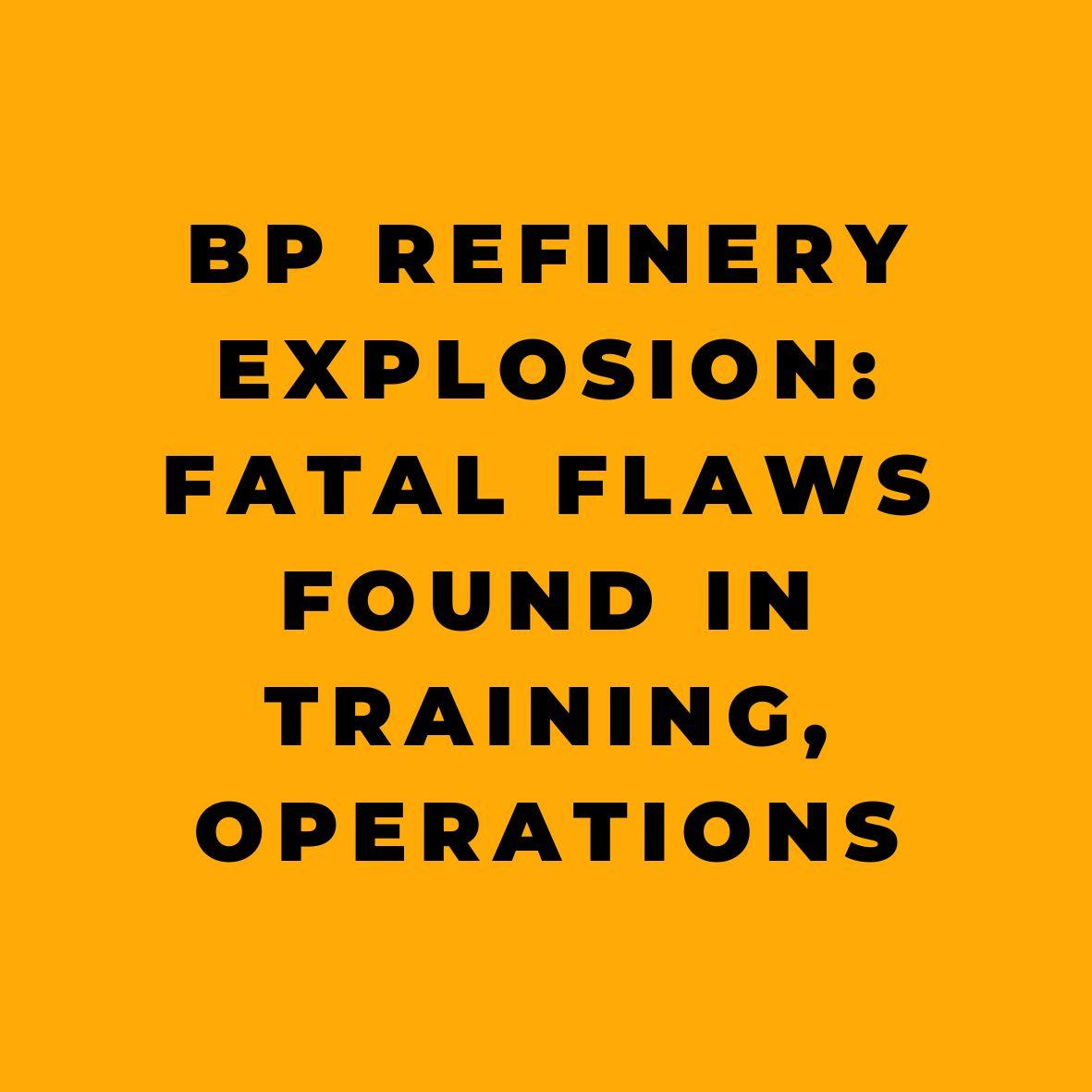In a shocking revelation, federal investigators have discovered significant operating and training deficiencies at an Oregon, Ohio refinery crude unit operated by BP Products North America Inc. These deficiencies contributed to a tragic explosion in September 2022 that claimed the lives of two workers. The investigators found that the gas production plant lacked proper training and process controls for managing leaks.
According to the report, the incident occurred as the workers tried to address rising liquid levels in the fuel gas mix drum. This led to the formation of a flammable vapor cloud, which subsequently ignited and triggered a devastating explosion. The blast resulted in fatal burns for both workers.
Inspectors from the Occupational Safety and Health Administration (OSHA) identified training shortcomings and a failure to comply with the department’s process safety management procedures for highly hazardous materials. The investigation further revealed that naphtha, a flammable liquid hydrocarbon mixture, was released when flow control valves were opened in an attempt to regulate an overfill in upstream process equipment. This action allowed the flammable liquid to enter the refinery’s fuel gas system.
OSHA has cited BP Products for neglecting to implement shutdown procedures for the equipment when requested by operators responding to the naphtha release. Additionally, the company failed to establish clear guidelines for the emergency shutdown of the crude tower.
OSHA Area Director Todd Jensen, based in Toledo, Ohio, emphasized the importance of compliance with federal safety standards. He stated, “This tragedy is a reminder of why employers must consistently reevaluate those procedures for accuracy and ensure workers are properly trained to respond in dangerous situations.”
OSHA has proposed penalties totaling $156,250, an amount determined by federal statutes, and cited BP Products for 10 serious violations and one other-than-serious violation of process safety management procedures. The agency’s findings indicate that BP Products failed to:
- Train operators to identify the presence of naphtha during an upset condition.
- Develop and implement safe work practices for responding to upset conditions.
- Document design for pressure safety valves, including for an overpressure scenario.
- Address hazards of overfilling process vessels and safeguards needed to protect against an overfill.
- Evaluate engineering or administrative controls for draining process equipment during upset conditions.
- Address human factors with the operation of the inside control board screen loading delays.
- Ensure process hazard assessments were accurate concerning level indicator safeguards.
BP Products North America Inc., a subsidiary of UK-based BP, is headquartered in Houston. The company is engaged in the exploration, development, refining, and marketing of oil and natural gas, serving customers worldwide.
Upon receiving the citations and penalties, the company has 15 business days to comply, request an informal conference with OSHA’s area director, or contest the findings before the independent Occupational Safety and Health Review Commission.
For more information on OSHA and its national emphasis program for chemical plants, click here.
What You Need to Know About OSHA’s PSM Covered Chemical Facilities National Emphasis Program
OSHA’s Process Safety Management (PSM) standard (29 CFR 1910.119) aims to prevent or minimize the consequences of catastrophic releases of toxic, reactive, flammable, or explosive chemicals that may result in fire, explosion, or toxic exposure. The standard applies to facilities that handle highly hazardous chemicals (HHCs) in quantities at or above certain threshold levels.
To ensure compliance with the PSM standard, OSHA has developed a National Emphasis Program (NEP) for inspecting facilities with HHCs. The NEP was first issued in 2009 and revised in 2011 and 2017. The latest version of the NEP is CPL 03-00-021, which became effective on January 17, 2017.
The NEP provides guidance for OSHA inspectors on how to select and conduct inspections of PSM-covered chemical facilities. It also outlines the enforcement policies and procedures for addressing violations of the PSM standard and related regulations.
This document outlines the National Emphasis Program (NEP) for inspecting facilities with Process Safety Management (PSM)-covered processes. State Plan states are required to participate in this emphasis program, and they must notify OSHA within 60 days whether their emphasis program will be identical to or different from the federal program. State Plan states must adopt the federal program or an alternative one within six months, and documentation of their adoption must be submitted to OSHA within 60 days of adoption.
The PSM standard was promulgated in 1992 in response to numerous catastrophic incidents involving the handling of highly hazardous chemicals (HHCs). OSHA issued CPL 02-02-045, which established policies, procedures, and compliance guidance for enforcing the PSM standard. The instruction acknowledged that Program Quality Verification (PQV) inspections were resource-intensive, which led to a limited number of inspections conducted.
OSHA implemented a PSM NEP for petroleum refineries in 2007, and an update in 2009. The Refinery NEP resulted in the inspection of all eligible non-Voluntary Protection Program (VPP) petroleum refineries in OSHA’s federal jurisdiction. In 2009, OSHA also implemented a pilot NEP for PSM-covered chemical facilities, which led to the implementation of the CHEM NEP in 2011, applying to all non-VPP PSM-covered processes except petroleum refineries.
OSHA has found a substantial number of hazards at facilities inspected under the CHEM NEP and has issued numerous significant enforcement cases since 2010. The continuation of significant petroleum refinery incidents in the U.S. has prompted OSHA to issue this instruction outlining a modified CHEM NEP that will include petroleum refineries and be launched OSHA-wide.
OSHA encourages employers to comply with the PSM standard and take proactive measures to prevent or mitigate hazards associated with HHCs. Employers can use various resources provided by OSHA and other organizations to improve their process safety management systems and practices.
Some examples of these resources are:
OSHA’s website on Process Safety Management
OSHA’s eTool on Process Safety Management
Center for Chemical Process Safety
By following OSHA’s PSM standard and implementing effective process safety management systems and practices, employers can protect their workers, their communities, their environment, and their business from the risks posed by HHCs.
References:


